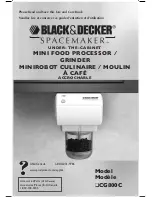
5-12
Z380
™
U
SER
'
S
M
ANUAL
DC-8297-03
Z
ILOG
5.5.8 Program Control Group
This group of instructions (Table 5-13) affect the Program
Counter (PC) and thereby control program flow. The CPU
registers and memory are not altered except for the Stack
Pointer and the Stack, which play a significant role in
procedures and interrupts. (An exception is Decrement
and Jump if Non-Zero [DJNZ], which uses a register as a
loop counter.) The flags are also preserved except for the
two instructions specifically designed to set and comple-
ment the Carry flag.
The Set/Reset Condition flag instructions can be used with
Conditional Jump, conditional Jump Relative, Conditional
Call, and Conditional Return instructions to control the
program flow.
The Jump and Jump Relative (JR) instructions provide a
conditional transfer of control to a new location if the
processor flags satisfy the condition specified in the in-
struction. Jump Relative, with an 8-bit offset (JR e), is a two
byte instruction that jumps any instructions within the
range –126 to +129 bytes from the location of this instruc-
tion. Most conditional jumps in programs are made to
locations only a few bytes away; the Jump Relative, with an
8-bit offset, exploits this fact to improve code compact-
ness and efficiency. Jump Relative, with a 16-bit offset (JR
[cc,]ee), is a four byte instruction that jumps any instruc-
tions within the range –32765 to +32770 bytes from the
location of this instruction, and Jump Relative, with a 24-bit
offset (JR [cc,] eee), is a five byte instruction that jumps any
instructions within the range –8388604 to +8388611 bytes
from the location of this instruction. By using these Jump
Relative instructions with 16-bit or 24-bit offsets allows to
write relocatable (or location independent) programs.
Call and Restart are used for calling subroutines; the
current contents of the PC are pushed onto the stack and
the effective address indicated by the instruction is loaded
Table 5-13. Program Control Group Instructions
Instruction Name
Format
nn
(PC+d)
(HL)
(IX)
(IY)
Call
CALL cc,dst
√
Complement Carry Flag
CCF
Call Relative
CALR cc,dst
√
Decrement and Jump if Non-zero
DJNZ dst
√
Jump
JP cc,dst
√
JP dst
√
√
√
Jump Relative
JR cc,dst
√
Return
RET cc
Restart
RST p
√
Set Carry Flag
SCF
into the PC. The use of a procedure address stack in this
manner allows straightforward implementation of nested
and recursive procedures. Call, Jump, and Jump Relative
can be unconditional or based on the setting of a CPU flag.
Call Relative (CALR) instructions work just like ordinary
Call instructions, but with Relative address. An 8-bit, 16-
bit, or 24-bit offset value can be used, and that allows to call
procedure within the range of –126 to +129 bytes (8-bit
offset;CALR [cc,]e), –32765 to +32770 bytes (16-bit offset;
CALR [cc,]ee), or –8388604 to +8388611 bytes (JR [cc,]
eee) are supported. These instructions are really useful to
program relocatable programs.
Jump is available with Indirect Register mode in addition
to Direct Address mode. It can be useful for implementing
complex control structures such as dispatch tables. When
using Direct Address mode for a Jump or Call, the operand
is used as an immediate value that is loaded into the PC to
specify the address of the next instruction to be executed.
The conditional Return instruction is a companion to the
call instruction; if the condition specified in the instruction
is satisfied, it loads the PC from the stack and pops the
stack.
A special instruction, Decrement and Jump if Non-Zero
(DJNZ), implements the control part of the basic Pascal
FOR loop which can be implemented in an instruction. It
supports 8-bit, 16-bit, and 24-bit displacement.
Note that Jump Relative, Call Relative, and DJNZ instruc-
tions use modulo 2
16
in Native mode, and 2
32
in Extended
mode for address calculation. So it is possible that the
Z380 CPU can jump to an unexpected address.
















































